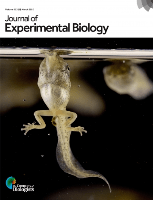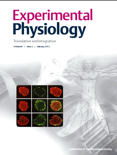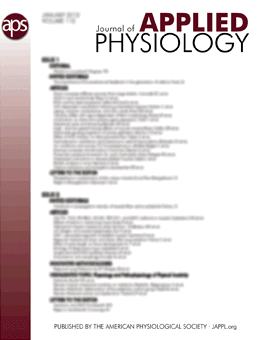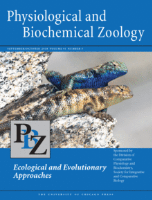
American Journal of Physiology-Regulatory, Integrative and Comparative Physiology
Scope & Guideline
Elevating the Standard of Physiological Scholarship
Introduction
Aims and Scopes
- Regulatory Physiology:
Research on the mechanisms by which organisms maintain homeostasis and respond to environmental changes, including studies on cardiovascular, respiratory, and metabolic regulation. - Comparative Physiology:
Investigations into physiological adaptations across species, emphasizing evolutionary perspectives and the functional significance of physiological traits. - Integrative Physiology:
Studies that examine how various physiological systems interact and integrate to produce adaptive responses, including neurophysiological and endocrine interactions. - Exercise Physiology:
Research focused on the physiological responses and adaptations to physical activity, including the effects of exercise on metabolic health, cardiovascular function, and muscle physiology. - Pathophysiology and Disease Models:
Exploration of physiological alterations in disease states and the use of animal models to understand human pathophysiology. - Environmental Physiology:
Studies examining how environmental factors such as temperature, altitude, and pollutants influence physiological processes and adaptations.
Trending and Emerging
- Metabolic Health and Disease:
A notable increase in studies addressing metabolic health, obesity, and associated disorders highlights the growing importance of understanding metabolic regulation and its implications for health. - Physiological Responses to Environmental Stressors:
Research examining how organisms adapt to various environmental stressors, such as hypoxia, heat, and pollutants, is emerging as a critical area of exploration, reflecting global environmental challenges. - Sex Differences in Physiology:
An increasing focus on sex differences in physiological responses and adaptations underscores the importance of understanding how biological sex affects health and disease outcomes. - Integrative Systems Biology:
There is a growing trend towards employing systems biology approaches to study the interactions of physiological systems, indicating a shift towards more holistic and complex models of physiology. - Impact of Early-Life Stress on Physiology:
Research exploring the long-term physiological effects of early-life stressors is gaining traction, emphasizing the importance of developmental physiology.
Declining or Waning
- Traditional Cardiac Physiology:
Research specifically focused on classic aspects of cardiac physiology, such as basic cardiac function and hemodynamics, appears less frequently, possibly overshadowed by studies integrating cardiac function with broader physiological systems. - Basic Neurophysiology:
Studies centered solely on neurophysiological mechanisms without a comparative or integrative approach have seen a decline, indicating a shift towards more complex interactions involving neurophysiology. - Static Models of Physiology:
Research employing static models or simplistic approaches to physiological questions is less common, reflecting a trend towards more dynamic and integrative experimental designs.
Similar Journals

PHYSIOLOGICAL RESEARCH
Advancing the Frontiers of PhysiologyPHYSIOLOGICAL RESEARCH, published by the Academy of Sciences of the Czech Republic, Institute of Physiology, serves as a prominent platform for scholarly contributions in the field of physiology and related disciplines. With an impact factor that highlights its significance—ranking in the Q2 category in Medicine (miscellaneous) and the Q3 in Physiology as of 2023—this journal has established itself as a vital resource for researchers, professionals, and students. Since becoming Open Access in 1991, it has broadened its reach, ensuring that vital research is freely available to academic communities worldwide. Covering a diverse range of topics, PHYSIOLOGICAL RESEARCH attracts submissions that advance the understanding of physiological processes, making it an indispensable resource for those invested in the field. Based in Prague, Czech Republic, this journal offers an enriching medium for discourse and dissemination in physiology, contributing to the global scientific landscape.

COMPARATIVE BIOCHEMISTRY AND PHYSIOLOGY A-MOLECULAR & INTEGRATIVE PHYSIOLOGY
Fostering Interdisciplinary Insights in Animal Sciences.Comparative Biochemistry and Physiology A-Molecular & Integrative Physiology, published by Elsevier Science Inc, serves as a pivotal platform for cutting-edge research in the fields of biochemistry, physiology, and animal sciences. The journal, holding an esteemed presence with an ISSN of 1095-6433 and E-ISSN 1531-4332, spans a remarkable history of contributions since its inception in 1960, showcasing significant findings up to 2024. As a Q1 quartile journal in Animal Science and Zoology and featuring competitive rankings across various biochemistry and physiology disciplines, it stands out as a leading resource for both established researchers and emerging scholars alike. The journal is committed to publishing high-quality, peer-reviewed articles that deepen our understanding of molecular and integrative physiology, playing an essential role in advancing scientific knowledge and fostering interdisciplinary collaboration. With access options that prioritize the dissemination of impactful research, Comparative Biochemistry and Physiology continues to shape the dialogue within these dynamic fields.

Comparative Biochemistry and Physiology D-Genomics & Proteomics
Advancing Understanding Through Comparative Insights in Molecular BiologyComparative Biochemistry and Physiology D-Genomics & Proteomics, published by Elsevier Science Inc, is a premier journal in the realm of molecular biology and comparative physiology, with a focus on genomic and proteomic sciences. Recognized for its high-impact contributions, it holds a Q1 ranking in Animal Science and Zoology and was established with the vision of bridging gaps in our understanding of biological systems through experimental and comparative approaches. With an impressive Scopus ranking, this journal not only ranks among the top 12% in Animal Science and Zoology but also demonstrates commendable standings across various categories including Aquatic Science and Molecular Biology. The journal’s commitment to disseminating high-quality research makes it an essential resource for researchers, professionals, and students alike, allowing them to access critical studies that influence advancements in genomics and proteomics. While it operates under a traditional subscription model, its impactful findings are crucial for those aiming to enrich their knowledge and research capabilities in these pivotal scientific fields. Join us in exploring the transformative insights and developments that this esteemed journal has to offer for the study of genomics and proteomics.

JOURNAL OF EXPERIMENTAL BIOLOGY
Unveiling the Secrets of Life Through Rigorous ResearchJOURNAL OF EXPERIMENTAL BIOLOGY, published by COMPANY BIOLOGISTS LTD, stands as a cornerstone in the fields of Animal Science, Aquatic Science, Ecology, Insect Science, and Physiology. With a rich history dating back to 1945, this esteemed journal has continually provided a platform for high-quality research, evidenced by its impressive Q1 rankings across multiple categories in the 2023 Journal Citation Reports. Located in the United Kingdom, it serves an international audience, offering critical insights and advancements in various biological sciences. As a non-open access journal, it provides rigorous peer-reviewed articles that contribute profoundly to our understanding of biological processes and their implications. With an extensive reach among researchers, practitioners, and academia, the JOURNAL OF EXPERIMENTAL BIOLOGY is not only a repository of knowledge but also a catalyst for ongoing research and innovation in experimental biology.

Physiological Reviews
Fostering Excellence in Physiological Research and AnalysisPhysiological Reviews is a prestigious journal published by the American Physiological Society, dedicated to advancing our understanding of physiology across various domains. With an impressive impact factor that places it in Q1 quartiles for medicine, molecular biology, and physiology as of 2023, this journal is recognized as a leading source of high-quality reviews and research analyses. The journal has been a vital resource for the scientific community since its inception in 1945, providing in-depth and comprehensive insights that are crucial for both scholars and practitioners in the field. Although not an open-access publication, it remains widely accessible through institutional subscriptions, ensuring that crucial research findings are disseminated efficiently. With Scopus rankings that place it in the top percentile across multiple categories, Physiological Reviews continues to be an essential platform for the latest advancements and discoveries in physiology, making it indispensable for researchers, professionals, and students alike.

EXPERIMENTAL PHYSIOLOGY
Connecting experimental findings to clinical applications.EXPERIMENTAL PHYSIOLOGY, published by WILEY, stands as a vital resource in the fields of Nutrition and Dietetics and Physiology, providing high-quality, peer-reviewed research since its inception in 1990. With an impressive categorization into the Q2 quartile in these domains, the journal emphasizes the integration of experimental and clinical findings, making significant contributions to our understanding of physiological processes and nutritional impacts on health. The journal operates within a competitive landscape, ranked significantly in Scopus, showcasing its relevance to both the medical community and nutritional sciences, as evidenced by its rankings in Nursing, Medicine, and Biochemistry. Though it is not currently open access, the journal remains an indispensable tool for researchers, professionals, and students seeking to deepen their knowledge and stay updated on cutting-edge research. With a publication window extending to 2024, EXPERIMENTAL PHYSIOLOGY continues to influence the academic discourse and promote advancements in its respective fields.

Journal of Comparative Physiology B-Biochemical Systems and Environmental Physiology
Fostering Interdisciplinary Dialogue in Animal PhysiologyJournal of Comparative Physiology B-Biochemical Systems and Environmental Physiology, published by SPRINGER HEIDELBERG in Germany, stands at the forefront of research in the fields of physiology, biochemistry, and ecological systems. With a commitment to fostering interdisciplinary communication, this journal has been a vital resource since its inception in 1974, converging scientific exploration through the lens of biochemical mechanisms and environmental adaptations in animal systems. Renowned for its rigorous peer-review process, it has achieved impressive rankings, including Q2 in Animal Science and Zoology and Ecology, Evolution, Behavior and Systematics, reflecting its substantial impact within these disciplines. The journal aims to disseminate cutting-edge research that advances our understanding of physiological and biochemical processes while addressing contemporary environmental challenges. While currently operating on a traditional access model, the journal's contributions are crucial for researchers, professionals, and students seeking profound insights into the complex interactions between organisms and their environments.

JOURNAL OF PHYSIOLOGY AND PHARMACOLOGY
Exploring the intersections of life sciences and medicine.JOURNAL OF PHYSIOLOGY AND PHARMACOLOGY is a distinguished publication presented by the POLISH PHYSIOLOGICAL SOC, dedicated to advancing the fields of physiology and pharmacology. Since its inception in 1991, this journal has maintained a commitment to disseminating vital research findings, contributing to the growing body of knowledge essential for understanding complex biological systems and their interactions with pharmacological agents. With a consistent focus on interdisciplinary studies, the journal holds a Q3 categorization in both Medicine and Pharmacology as well as Physiology for 2023, reflecting its relevance in these crucial fields. Although specific access options are not available, the journal's robust indexing and rankings in Scopus signify its credibility and the high caliber of its contributions, appealing to researchers, professionals, and students alike. Operating from the picturesque Jagiellonian University in Krakow, Poland, this journal not only enriches the academic landscape but also fosters global collaboration and innovation in the life sciences.

Journal of Applied Physiology
Elevating the Science of Health and Exercise.The Journal of Applied Physiology, established in 1948 and published by the American Physiological Society, stands as a cornerstone in the field of physiology and applied health sciences. With an impact factor reflecting its rigorous scholarly contributions, this peer-reviewed journal ranks in the Q1 category for both Medicine (miscellaneous) and Physiology as of 2023, further emphasizing its prestige and relevance. Researchers and practitioners are drawn to its comprehensive scope, which includes physiological and biomechanical responses relevant to health, exercise, and clinical practices, making it an essential resource for advancements in sports science and medical physiology. Though it does not offer Open Access, the journal provides a wealth of high-quality research, with contributions that are crucial for understanding the complexities of human physiology. Its inclusion in Scopus ranks demonstrates a solid commitment to advancing knowledge in the field, appealing to a diverse audience of researchers, professionals, and students committed to exploring the intricate interactions between physiological processes and applied health.

PHYSIOLOGICAL AND BIOCHEMICAL ZOOLOGY
Connecting Physiology, Biochemistry, and ZoologyPhysiological and Biochemical Zoology is a distinguished peer-reviewed journal published by University of Chicago Press, focusing on the interrelated fields of animal physiology, biochemistry, and zoology. With a strong commitment to advancing scientific understanding, this journal serves as a vital resource for researchers, professionals, and students alike, providing a platform for the latest findings and advancements in the field. Ranking in the top quartile (Q1) in Animal Science and Zoology as of 2023, and showcasing a substantial convergence of historical data from 1999 to 2023, its impact in the academic community is underscored by its engagement with high-quality research. While it also appears in the third quartile for Biochemistry and Physiology, the journal successfully integrates these disciplines, reflecting the complexity of biological systems. Available for reading via various access options, this journal is essential for anyone seeking to deepen their knowledge or contribute to the field of Zoological sciences.